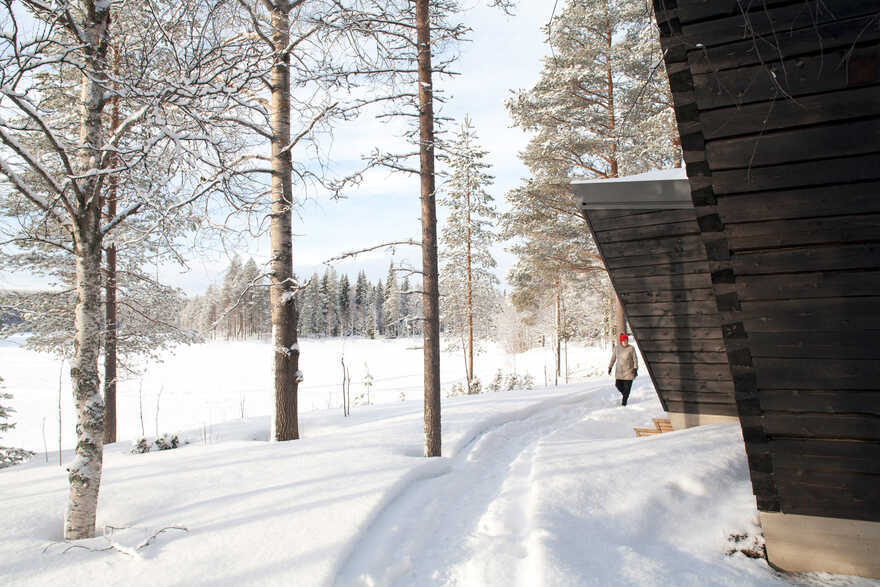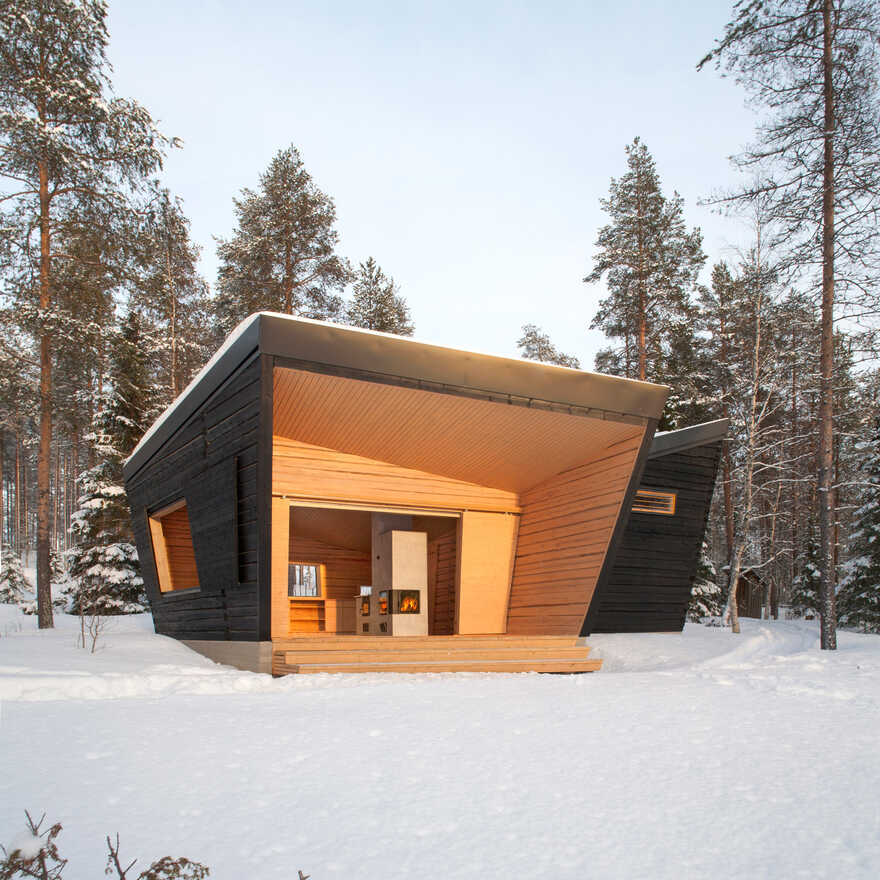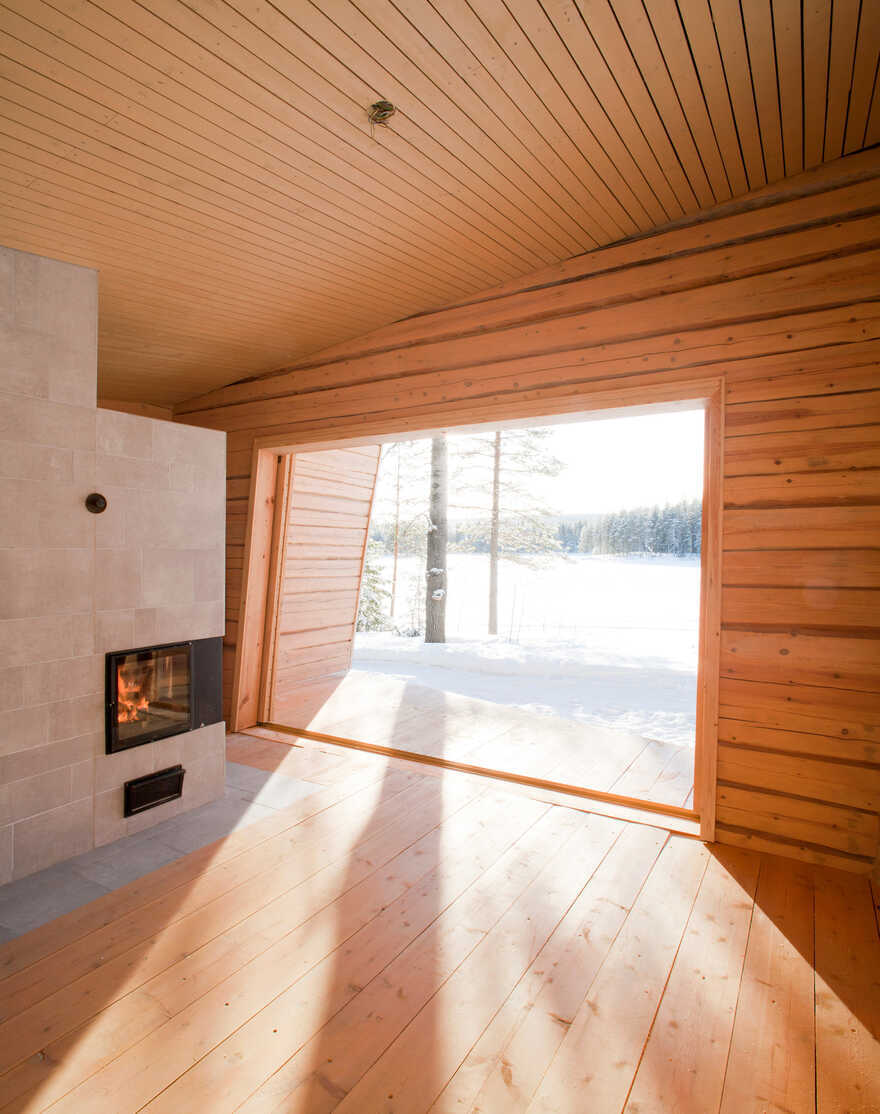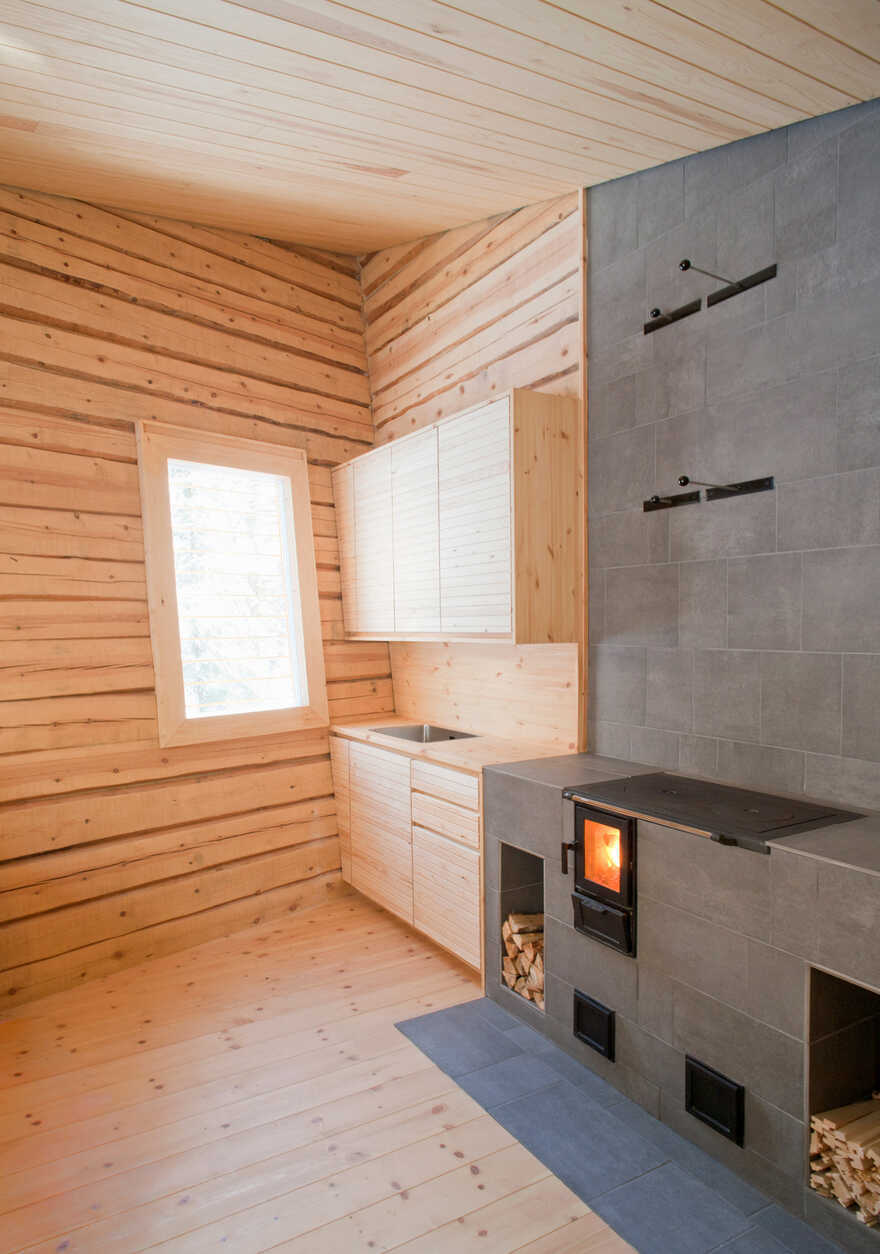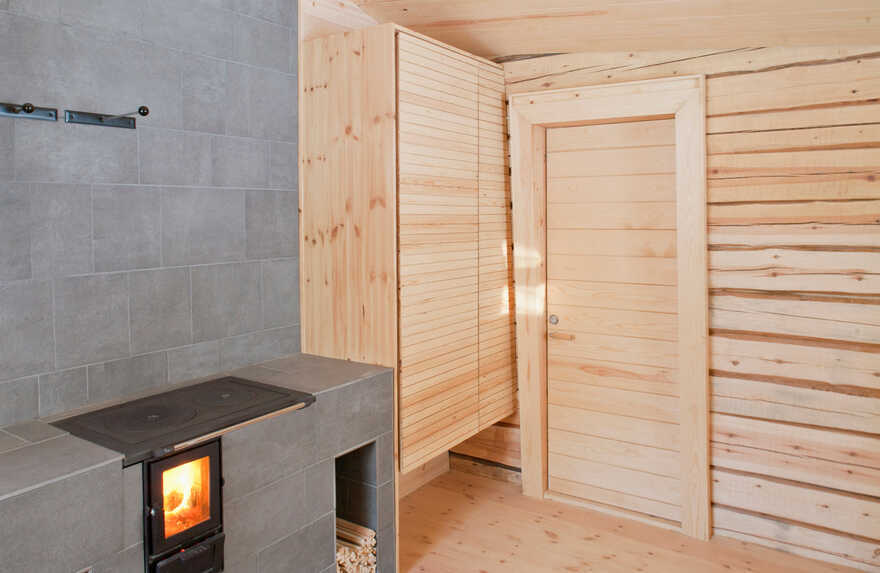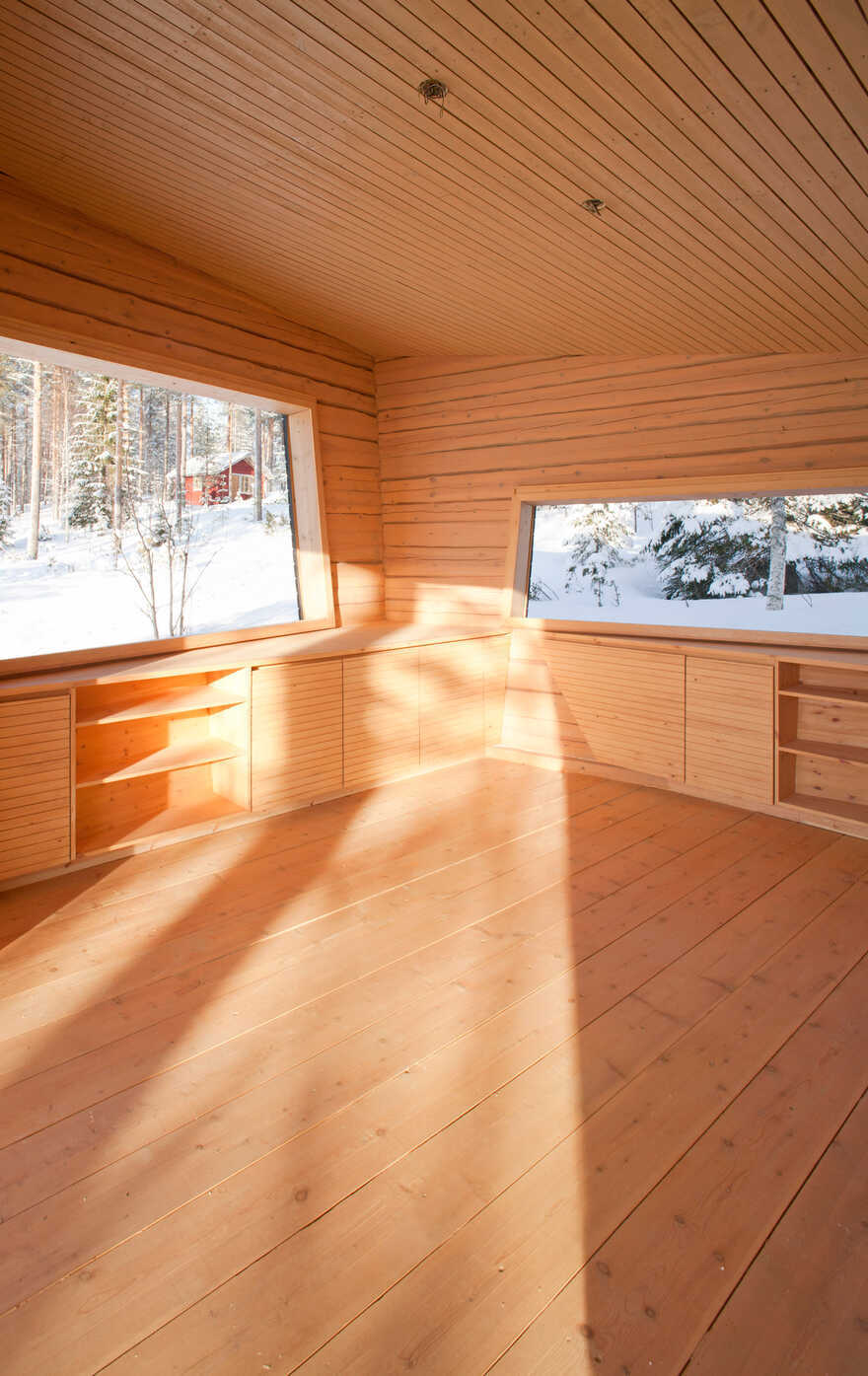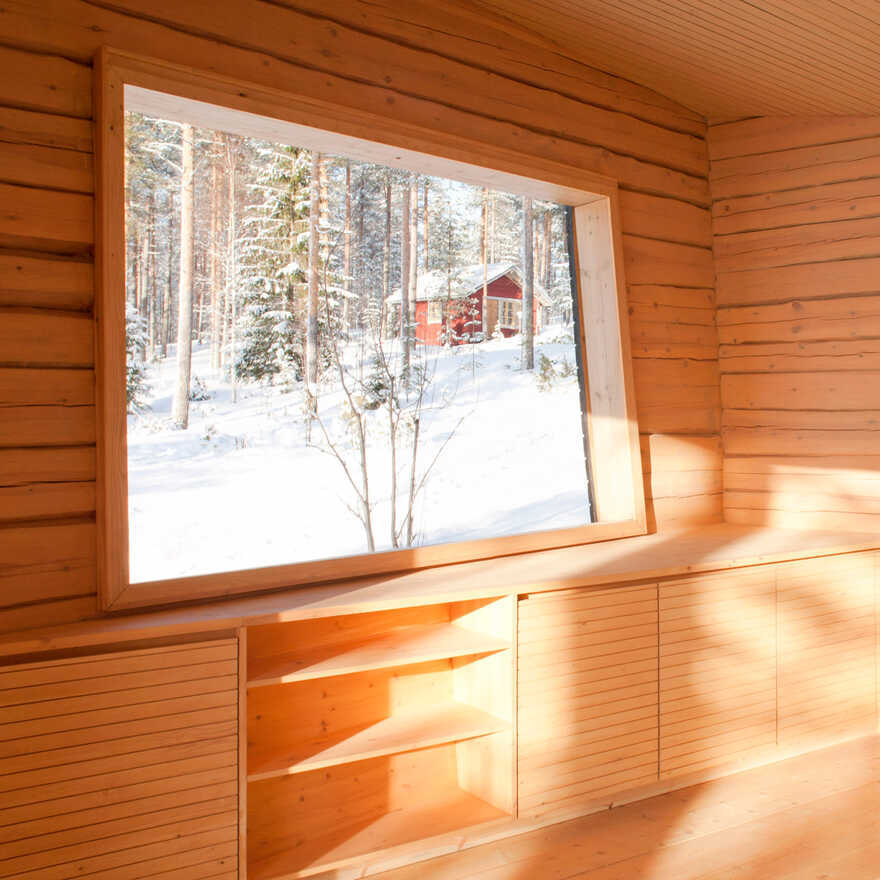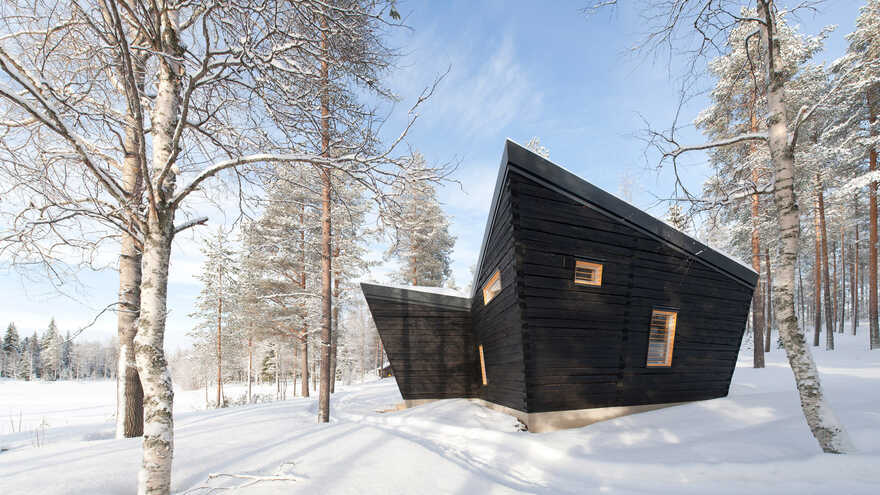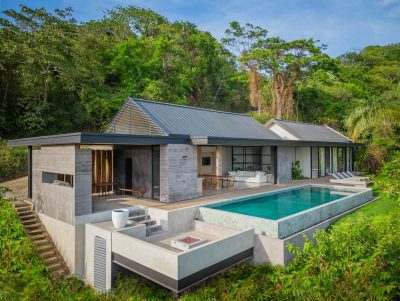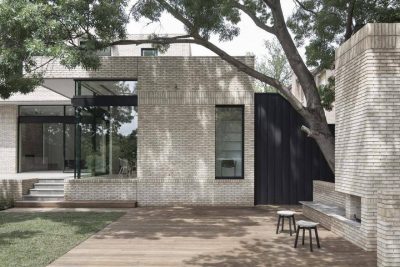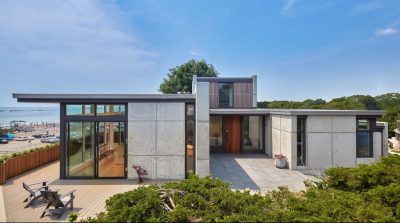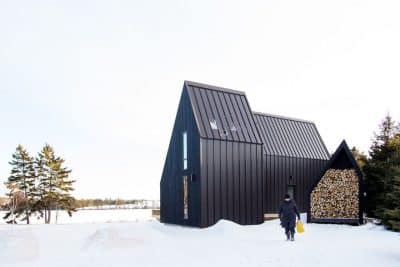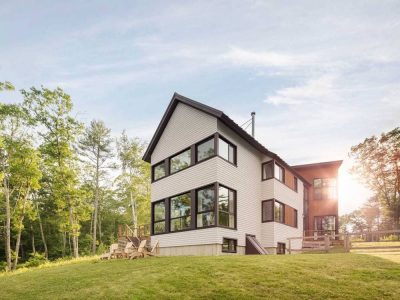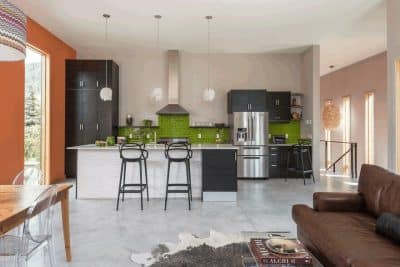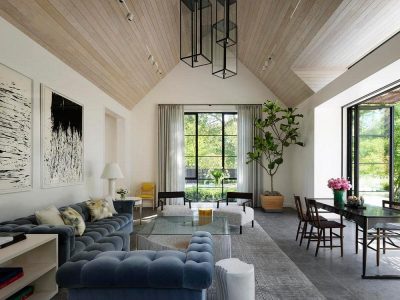Project: Arctic Sauna Pavilion
Architects: Toni Yli-Suvanto Architects
Main contractor: Rainer Yli-Suvanto
Location: Lapland, Finland
Completion in 2019
Gross Floor Area: 30 m2
Photography: Toni Yli-Suvanto Architects
In Lapland, the extent of the living indoor space used to follow a cycle of natural seasons. During the cold wintertime, the occupied indoor space was limited to one compact building with an efficient multiuse floor plan, in order to save the heating resources. In warmer seasons the living area was expanded by several unheated buildings around the common courtyard, making the summer life spacious and preventing the main building from overheating. This Arctic Sauna Pavilion follows this tradition.
The building is the centre of social activities during the warm seasons of the year. Cooking and dining takes place in the unheated main space, dominated by generous views towards the Nordic lake landscape, and towards the midnight sun. These activities are complemented by the sauna room, which follows the traditional concept of having both bathing and sauna facilities in the same space, thus allowing the enjoyment of both the warmth and the humidity.
In terms of massing, the northern side follows the built geometry of the other existing buildings in the context, whereas the southern side follows the natural lakefront. The walls are tilted following the traditional concept of two storage buildings situated close to the pavilion. The lake view is captured by the main opening, operated by sliding doors, and framed by a covered terrace extension. Reflected sunlight from the lake surface is directed to the space by generous tilted ceiling surface. The Arctic Sauna Pavilion concept follows the principle of natural air flow: the bathing takes place on cooler ground level, and the hot steams are enjoyed on benches higher in the room.
In order to minimize the carbon footprint and support the local economy, more than 95% of the building material is sourced, processed and constructed locally.
All of the super structure and the finishes are of locally sourced and processed timber, as well as the scaffoldings and the formwork used during the construction. The insulation is made of cellulose, the construction waste is reused for heating. Cooking and heating are timber based and the organic waste is composted and reused as fertilizer in the gardens.


